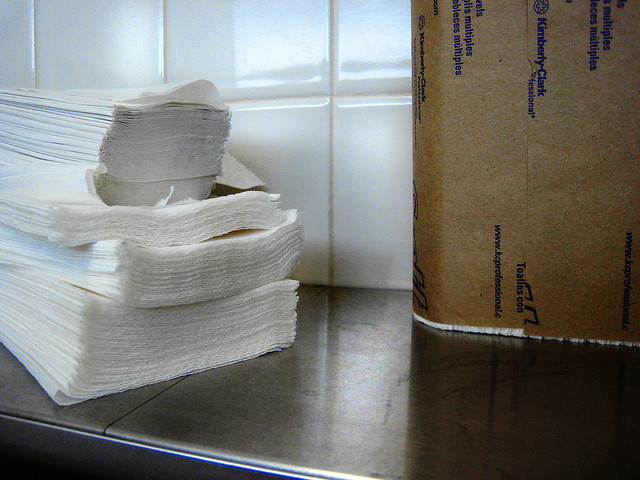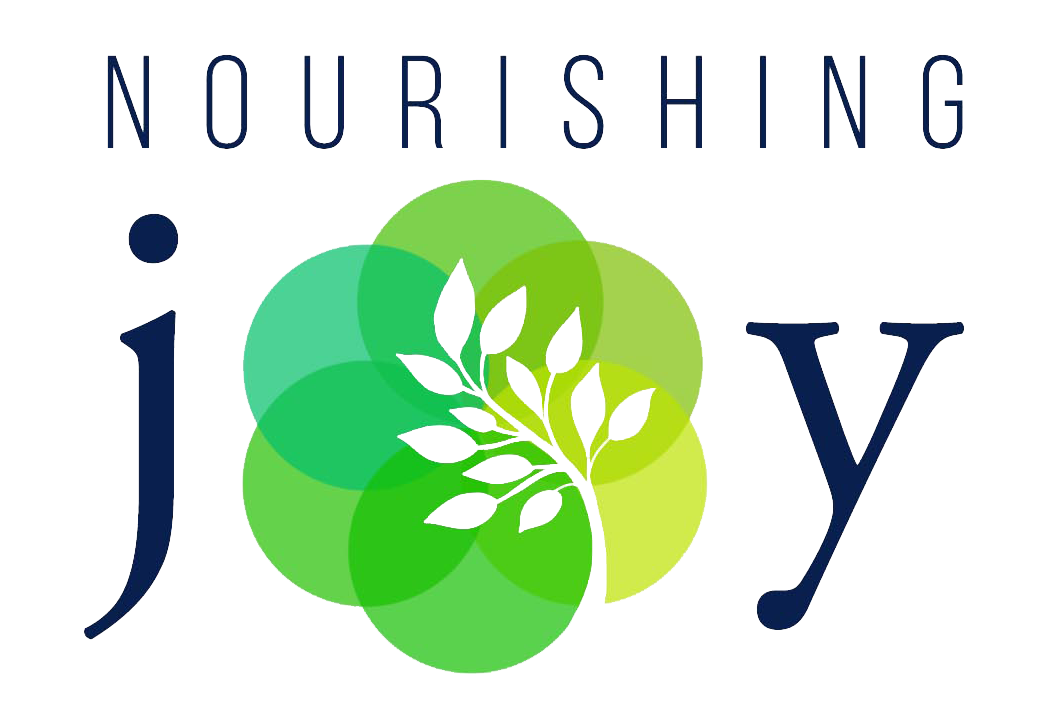10 Ways to Go Paperless in Your Home
This post may contain affiliate links, including those from Amazon.com, which means we earn a small commission off your purchases. And here's the thing: We only mention services and products that we think are truly worth your attention, whether they're free, paid, or otherwise. This site relies on YOUR trust, so if we don't stand behind a product 110%, it's not mentioned. Period.



With the new year just beginning, we're spending this month looking at ways to make simple changes in your home that are frugal and support a sustainable lifestyle. Today we're looking at ways to reduce the amount of paper and similar single-use products used in the home.
Make paper towels
Making cloth towels to replace paper towels is quite simple. The most absorbent, lint-free cloth for this purpose is birdseye cotton, which is often used in large squares for cloth diapering. You can either repurpose old birdeye diapers (that are no longer in service, so to speak!) or purchase new ones fairly inexpensively at various mass merchandisers or at Amazon.com
.
The squares are quite large and I find it easiest to cut them to the similar shape of the paper towels – thus, cut the square into four squares and hem up the edges with a sewing machine. There's no need to be fancy for this – just a simple straight stitch will do.
If you prefer not to make your own, you can purchase 2-3 dozen bar mops, flour sack towels, or inexpensive tea towels, as well.
Once you have your cloth kitchen towels made, the key to actually using them is to keep them handy and to change them frequently. I keep a laundry basket in the kitchen and toss towels in as I use them. Any towels that have been used lightly I use more than once, but at the end of the day I toss in all the used ones so I start each day fresh.
Use cloth napkins
Cloth napkins can be found easily at any thrift store, mass merchandiser, or kitchen-ware store. They range from the very simple to the extravagant (and very expensive). You can also make them yourself from any cotton or bamboo fabric by cutting them into squares and sewing up the sides. I love the look of cloth napkins on the table, too – they lend an elegant boost to the everyday table.
Use cloth diapers
Since I'm an avid cloth diaper advocate and work as a cloth diapering instructor, this one is a no-brainer for me, although I must admit that I remember vividly how overwhelmed my husband and I were when we first switched to cloth diapers. It's well worth the effort, though!
Here are just a few reasons why to use cloth:
Save beaucoups bucks! The average baby goes through approximately 7200 diaper changes between birth and potty training (assuming he or she potty trains around the age of 3). The cost of that many disposable diapers is approximately $2,800-$3,500, depending on the brand, whereas the cost of purchasing and maintaining cloth diapers for the same period of time is between $800 and $1,700, ((New & Green Baby Company, Vancouver, BC – based on April 2010 rates)) depending on the types of diapers you buy, how often you wash them, and how often you use the dryer to dry them. And if you can use those diapers on a second child, the savings significantly increase!
The health of your child. Cloth diapers allow your baby's skin to breathe and don't have any chemicals to irritate your baby's skin. Natural fibers, such as hemp and bamboo, are also naturally anti-bacterial, although studies vary on whether or not the anti-bacterial properties are significant enough once the fibers are made into fabrics to make a difference.
Environmental impact reduction. Cloth diapering certainly does have an environmental impact, largely drawing from energy usage during cleaning, but it is significantly less than the staggering effect of throwing plastic, SAP (super absorbent polymer) crystals, and human waste into a landfill. The use of cloth requires you to toss the waste into the toilet, sends the washing waste water into a proper treatment facility (unless you use a greywater system in your home – in which case, kudos to you!), and reduces the amount of bulk being sent into the landfill.
They're cute on your baby's bum! Modern cloth diapers making diapering super-easy, practical, and stylish.
Use cloth menstrual pads and menstrual products
Whether you prefer tampons or pads, there are lots of options for reusable menstrual products, many of which work better than their tossable counterparts.
If you like pads, I highly recommend LunaPads, Glad Rags, or finding a crafty lady via Etsy.com to sew pads for you. There are many other companies as well, but I only have experience with those three options and can easily recommend them. I've also used LunaPads post-partum, and I have to admit – they've made the experience downright enjoyable.
(As a side note, if any of you like to sew, I happen to have hundreds of pre-cut pieces of fabric to make your own menstrual pads. I won't be using them all, so just contact me if you'd like a few – or a lot – and I'd be happy to send them to you for the cost of shipping.)
If you're more of a tampon girl, I recommend the Diva Cup. Using a Diva Cup has made having my period easy – I can use it for at least 12 hours straight before having to worry about leaks. If you want to try other options, I've seen sea sponge tampons for sale and make-your-own washable tampon patterns, but I haven't tried any of them, so can't do much more than mention them.
Use cloth wipes – for you and for Baby!
If you're cloth diapering, cloth wipes are an easy, essential part of taking care of your baby's messes. However, it can be more of a leap to switch to cloth wipes for our adult bums as well.
I must say, however, that once I switched (especially for the less… shall we say, messy… trips to the bathroom), it was easier and a better experience than I originally expected. Cloth wipes feel better than paper, they are easy to toss in with any load of laundry (especially towels or diapers), and they save money. All good reasons in my book! To keep your bathroom neat and tidy, find a medium or large decorative vase at a thrift store to keep by the commode for the dirties. If you need to keep pets or curious toddlers away from the dirty wipes, get a medium-sized zippered wet bag to keep nearby instead.
You can also find premade cloth wipes at any cloth diapering store or at Amazon.com or you can make them cheaply by cutting flannel into 8″x8″ squares.
I recommend having at least 2-3 dozen on hand.
Use reusable sandwich bags or containers
If we used a plastic, resealable bag every time we packed a snack or a lunch, we'd be going through a lot of baggies in our house. Instead, we have found reusable sandwich and snack bags to be a very viable and stylish option. Munchkin now makes snack size zippered baggies (and I prefer their choice of fabrics over other brands), LunchSkins
offers every size conceivable, and there are lots of other options
available via Amazon.com
and Etsy.com.
You can also make your own fairly easily – I have found a large variety of patterns just by searching for “cloth sandwich bag pattern” and “reusable sandwich bag pattern” when I've wanted to be a bit more crafty….
Avoid buying packaged food products, buy in bulk, and carry goods home in reusable bags
You can reduce the amount of paper in your home significantly just by not purchasing packaged food products. There is so much paper, cardboard, and plastic in those items!
As an alternative, bring your own produce bags and buy items in bulk. There are many options at Amazon.com
or you can easily stitch a bag from cotton muslin that will be light enough to not add extra weight (and thus extra cost) at the cashier.
Unsubscribe from mailing lists
I don't know about you, but we receive so much junk mail that adds up to loads of paper dumped straight into the recycling bin and shredding machine. To reduce this amount of clutter, unsubscribe from as many mailing lists as you can, shred credit card offers when they arrive, and enjoy magazines for only a month or two before tearing out the articles and recipes that interest you (to be kept in one convenient three-ring binder) and recycling the rest.
Use handkerchiefs
Rather than purchasing boxes of tissues through cold season, use handkerchiefs and hankies. These are easily washed and sanitized and you can designate different designs for different members of the family. Some department stores still carry handkerchiefs (often with the men's ties or women's socks), but I have had much better luck at thrift stores and estate sales.
Use reusable grocery bags
Nearly every grocery store now offers reusable bags to advertise their store, but you can use any tote or canvas bag. Again, thrift stores are a great source for these – but then again, most homes I know of are already full of bags of various kinds, so why not repurpose something you've already got? Cheap and easy – the best combination of all!
Remembering to carry the bags into the store is sometimes the most difficult part of actually using cloth grocery bags. Keep them in a visible area and make them easy to grab in the car, and then no last minute distractions (like your two-year-old needing attention as you pull into the store parking lot), will make you forget them.
Share Your Ideas
I'd love to hear other ways to reduce paper in the home. Leave a comment with your ideas!



